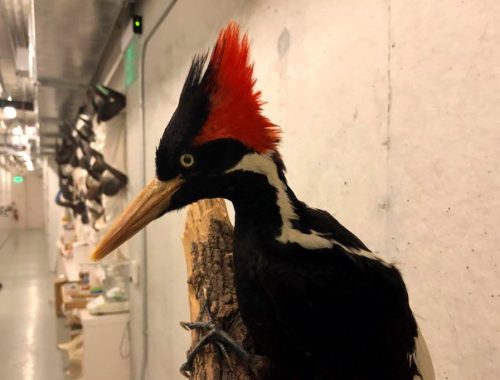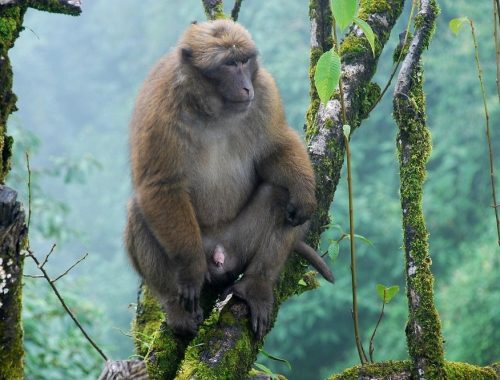Close Encounter in the Wild: Hair-raising Video of a Rhino Chasing Away Tiger in Kaziranga by Niloy Bhattacharjee: For this particular video, Bishwajit Chetry had to patiently wait for half an hour. And then it all happened in a flash. The 25-year- old, who has been working as a tourist guide in the world heritage Kaziranga National Park for the past five years, was accompanying a group of three visitors from Mumbai in early April. Driving a few kilometres inside the Bagori range of the national park, he stopped his vehicle near a small freshwater body.
“There was this rhino, a tall and huge one, drinking water. I could sense something, so I told the tourists that we will go no further and wait near the water till the next movement of the animal. After around thirty minutes or so, the female adult rhino noticed a Royal Bengal tiger a few meters away. The mother rhino had its calf along with it and in such a situation they become very alert and ferocious. It started chasing the tiger. The rhino ensured that the tiger was out of the water. I filmed the entire chase. It was one of the rare, fortunate moments for me and a lifetime experience for the tourists,” says Bishwajit Chetry.
The tiger population in Kaziranga National Park has increased to 111, according to the 2017 census. In 2014, the number was just 83. The sanctuary hosts two-thirds of the world’s great one-horned rhinoceroses. According to the census held in March 2018, jointly conducted by the forest department of Assam and some recognized wildlife NGOs, the rhino population in Kaziranga National Park is 2,413. It comprises 1,641 adult rhinos (642 males, 793 females, 206 unsexed), 387 sub-adults (116 males, 149 females, 122 unsexed), and 385 calves.
As India Crosses 22-Crore Mark, Gender Gap in Vaccine Remains Worse Than Countrys Sex Ratio
As India Crosses 22-Crore Mark, Gender Gap in Vaccine Remains Worse Than Country’s Sex Ratio
Kaziranga is a vast expanse of tall elephant grass, marshland, and dense tropical moist broadleaf forests, crisscrossed by four major rivers, including the Brahmaputra, and the park has numerous small bodies of water.
“When I take tourists, I follow deer calls to locate tigers. This year there have been maximum sightings. Almost all tourists whom I have accompanied have been fortunate to see the Royal Bengal tiger at Kaziranga. Despite four spells of floods, I have possibly seen the Royal Bengal tigers a hundred times this year. The maximum sightings have been in the Kohora Range. You need to be patient to sight a Royal Bengal tiger in its lair,” says Chetry. He has first-hand knowledge of 400 species of birds found in the national park and also runs a jeep safari service for tourists.
According to Bishwajit Chetry, whose father works as a forest guard in the national park, the tiger seen in the video was injured in a territorial fight and had head wounds. It was resting in the waterbody, something tigers normally don’t do for a long duration. They come to drink water and then leave.




